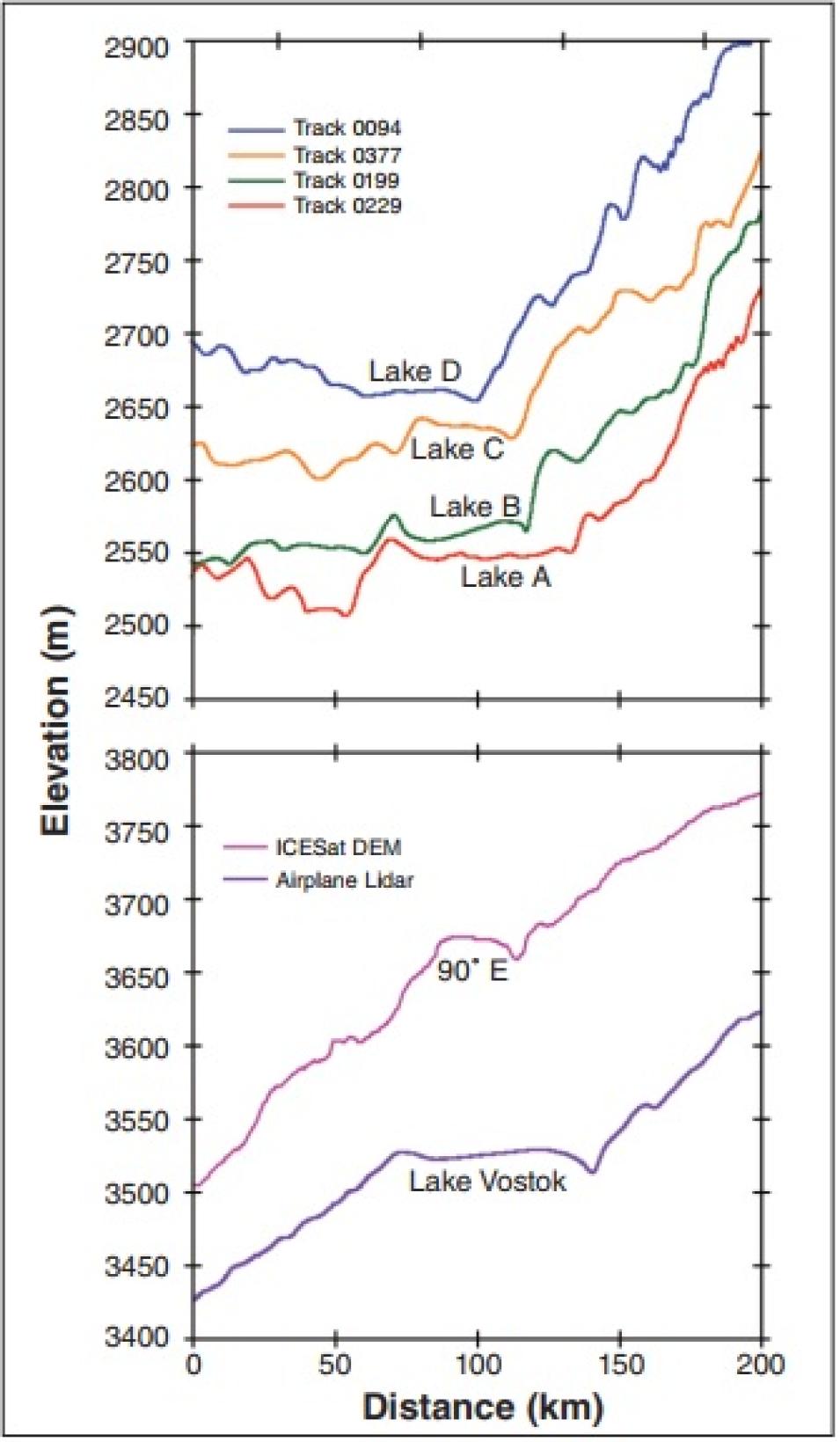The researchers now see a strong connection between the four Recovery Lakes and the ice stream. Bell and Studinger concluded that the Recovery Ice Stream originates at the lakes. It is the first time subglacial lakes have been connected to ice streams. “Suddenly these lakes went from being just this cool ecosystem to being a fundamental part of ice sheet dynamics and how ice is delivered to the oceans,” she said. Bell thinks that subglacial lakes warm up the underbelly of an ice sheet. She also suggested that subglacial lakes provide a supply of water that lubricates the bottom of the ice sheet, allowing it to move faster toward the ocean.
To date, over 200 subglacial lakes have been discovered underneath the ice of Antarctica. Studinger said, “What scientists now know is that these lakes are not as isolated as once thought.” Remote sensing has shown that the ice surface above these subglacial lakes can either drop or pop up thirty to forty feet in two months. Based on this information, colleague Helen Fricker suggested that water moves out of one lake and into the next. Studinger said it is important to ask how the presence of water under the ice sheets can impact their stability.
Bell said, “Liquid water plays a crucial and, until quite recently, underappreciated role in the internal movements and seaward flow of ice sheets. Understanding how liquid water forms under an ice sheet, where it occurs and how climate change can intensify its effects on the world’s polar ice are paramount in predicting—and preparing for—the consequences of global warming on sea level.”
References
Bell, R. E., M. Studinger, C. A. Shuman, M. A. Fahnestock, and I. Joughin. 2007. Large subglacial lakes in East Antarctica at the onset of fast-flowing ice streams. Nature 445, doi:10.1038/nature05554.
Bell, R. E. 2008. Unquiet ice speaks volumes on global warming. Scientific American, February 2008, 60.
Scambos, T. A., T. M. Haran, M. A. Fahnestock, T. H. Painter, and J. Bohlander, 2007. MODIS-based Mosaic of Antarctica (MOA) data sets: Continent-wide surface morphology and snow grain size. Remote Sensing of Environment 111(2-3): 242−257, doi:10.1016/j.rse.2006.12.020.
Siegert, M. J. 2000. Antarctic subglacial lakes. Earth-Science Reviews 50:29–50.
Studinger, M., et al. 2002. Origin and fate of Lake Vostok water frozen to the base of the East Antarctic ice sheet. Nature 416: 307−310 (21 March 2002), doi:10.1038/416307a.
For more information
NASA Alaska Satellite Facility Distributed Active Archive Center (ASF DAAC)
NASA National Snow and Ice Data Center DAAC (NSIDC DAAC)
Geoscience Laser Altimeter System (GLAS)
Moderate Resolution Imaging Spectroradiometer (MODIS)
Mosaic of Antarctica (MOA)
| About the remote sensing data |
| Satellites |
Ice, Cloud, and Land Elevation Satellite (ICESat) |
Terra and Aqua |
Terra and Aqua |
Canadian Space Agency RADARSAT-1 |
| Sensors |
Geoscience Laser Altimeter System (GLAS) |
Moderate Resolution Imaging Spectroradiometer (MODIS) |
MODIS |
Synthetic Aperture Radar (SAR) |
| Data sets |
GLA06 Release 424 |
MODIS Level 1B Calibrated Radiances MOD02QKM (Terra), MYD02QKM (Aqua) |
Mosaic of Antarctica (MOA) |
Antarctic Mapping Mission |
| Resolution |
172 meter along track |
250 meter |
250 meter |
1.0 kilometer (velocity) |
| Parameters |
Ice sheet elevation profiles |
Radiances |
Digital image map |
Ice velocity |
| DAACs |
NASA National Snow and Ice Data Center Distributed Active Archive Center (NSIDC DAAC) |
NASA Level-1 and Atmosphere Archive and Distribution System DAAC (LAADS DAAC) |
NSIDC Antarctic Glaciological Data Center |
NASA Alaska Satellite Facility DAAC (ASF DAAC) |
The table above lists the public NASA archive for these remote sensing data sets. Bell and Studinger used the GLA06 data set with a spatial resolution of 172 meters along track (plus DEM v1, gridded at 500 meters), with additional processing from Goddard.




